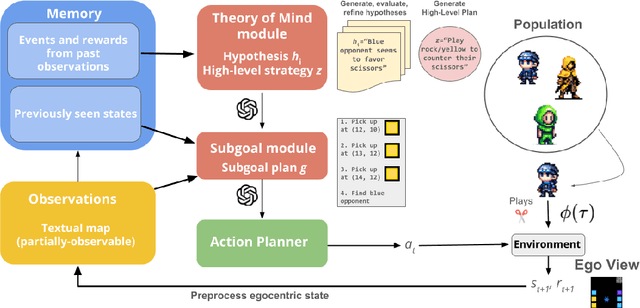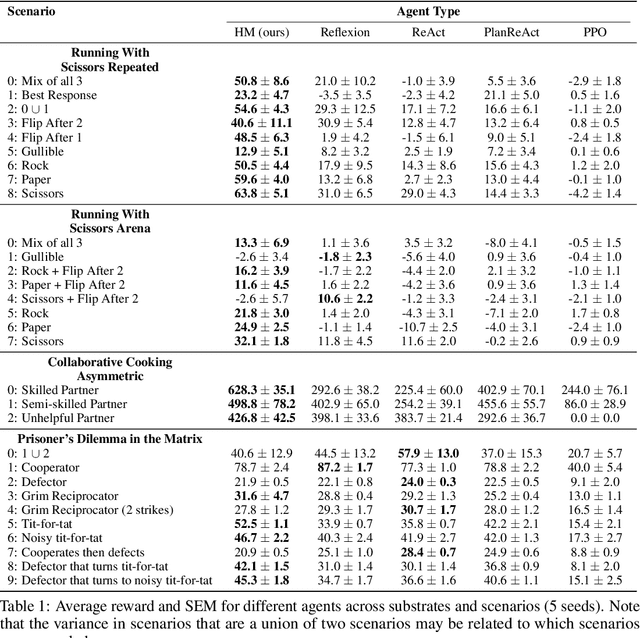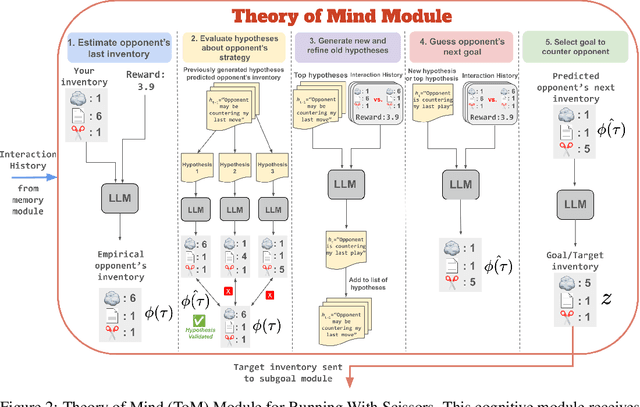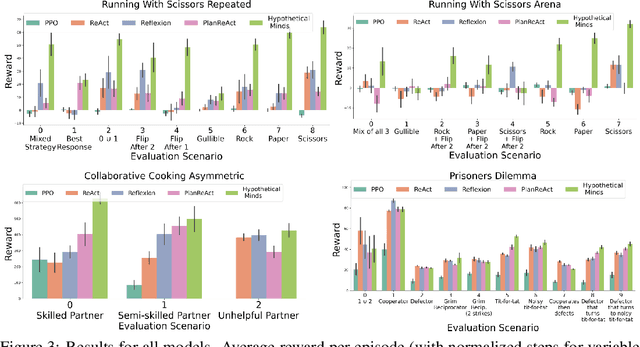Agam Bhatia
Hypothetical Minds: Scaffolding Theory of Mind for Multi-Agent Tasks with Large Language Models
Jul 09, 2024



Abstract:Multi-agent reinforcement learning (MARL) methods struggle with the non-stationarity of multi-agent systems and fail to adaptively learn online when tested with novel agents. Here, we leverage large language models (LLMs) to create an autonomous agent that can handle these challenges. Our agent, Hypothetical Minds, consists of a cognitively-inspired architecture, featuring modular components for perception, memory, and hierarchical planning over two levels of abstraction. We introduce the Theory of Mind module that scaffolds the high-level planning process by generating hypotheses about other agents' strategies in natural language. It then evaluates and iteratively refines these hypotheses by reinforcing hypotheses that make correct predictions about the other agents' behavior. Hypothetical Minds significantly improves performance over previous LLM-agent and RL baselines on a range of competitive, mixed motive, and collaborative domains in the Melting Pot benchmark, including both dyadic and population-based environments. Additionally, comparisons against LLM-agent baselines and ablations reveal the importance of hypothesis evaluation and refinement for succeeding on complex scenarios.
ColorSwap: A Color and Word Order Dataset for Multimodal Evaluation
Feb 07, 2024Abstract:This paper introduces the ColorSwap dataset, designed to assess and improve the proficiency of multimodal models in matching objects with their colors. The dataset is comprised of 2,000 unique image-caption pairs, grouped into 1,000 examples. Each example includes a caption-image pair, along with a ``color-swapped'' pair. We follow the Winoground schema: the two captions in an example have the same words, but the color words have been rearranged to modify different objects. The dataset was created through a novel blend of automated caption and image generation with humans in the loop. We evaluate image-text matching (ITM) and visual language models (VLMs) and find that even the latest ones are still not robust at this task. GPT-4V and LLaVA score 72% and 42% on our main VLM metric, although they may improve with more advanced prompting techniques. On the main ITM metric, contrastive models such as CLIP and SigLIP perform close to chance (at 12% and 30%, respectively), although the non-contrastive BLIP ITM model is stronger (87%). We also find that finetuning on fewer than 2,000 examples yields significant performance gains on this out-of-distribution word-order understanding task. The dataset is here: https://github.com/Top34051/colorswap.
 Add to Chrome
Add to Chrome Add to Firefox
Add to Firefox Add to Edge
Add to Edge